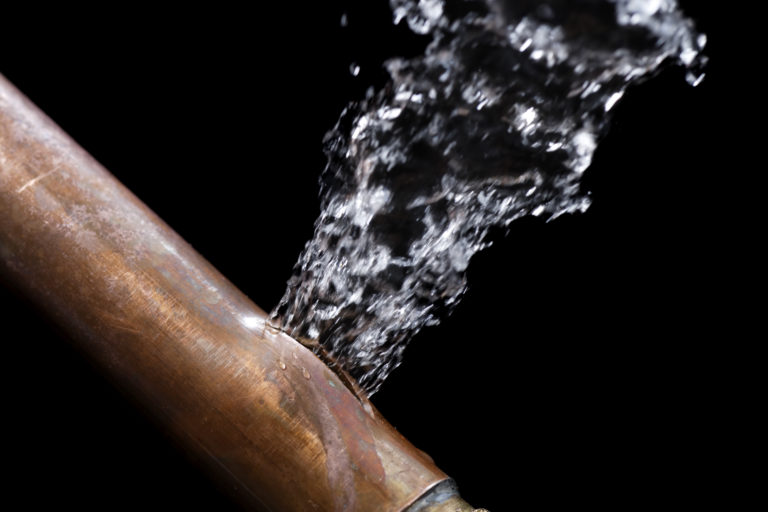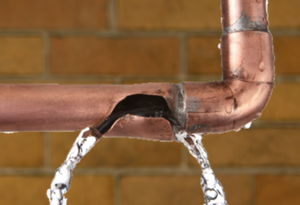Understanding the Signs of a Burst Pipe and Rapid Repair Approaches
Understanding the Signs of a Burst Pipe and Rapid Repair Approaches
Blog Article
The article author is making a few great points related to How to Prepare for Your Dishwasher Installation as a whole in the article below.

A ruptured pipeline is a significant emergency; you can just stand as you enjoy water you pay a lot to rejoin with the planet. In worse cases, you discover a pool on your kitchen flooring, which is a great journey threat, specifically if you have kids around. If the pipe that burst was in your wall surfaces, trouble: you might require to repaint that entire section.
How can a tragedy like a ruptured pipe be avoided and managed? Well, by listening to your specialist emergency plumbing professionals as well as following these regulations.
Exactly how do I understand when my pipes have ruptured?
Rising and fall water pressures
Pipes do not simply burst in a day. You might have observed that your kitchen faucet or shower does not run right away when you turn the faucet. It might stop briefly for a few secs and after that blast you with more force than common.
In other instances, the water might seem regular initially, then decrease in pressure after a few secs.
Wet walls and also water spots
Before a pipeline ruptureds, it will leakage, a lot of times. If this persistent dripping goes unnoticed, the leakage might graduate right into a large gash in your pipe. One very easy method to avoid this emergency is to watch out for wet wall surfaces ad water stains. These water discolorations will lead you right to the leakage.
Puddles under pipes and sinks
When a pipeline bursts, the discharge forms a pool. It might appear that the pool is growing in dimension, and despite how many times you wipe the puddle, in a couple of minutes, there's an additional one waiting to be cleaned up. Often, you may not have the ability to trace the pool to any type of noticeable pipes. This is an indicator to call an expert plumber.
Untraceable trickling sounds
Pipe ruptureds can happen in one of the most unpleasant locations, like within concrete, inside wall surfaces, or under sinks. When your home goes quiet, you may have the ability to hear an irritatingly relentless dripping sound. Also after you've inspected your shower head and also kitchen faucet, the dripping may proceed.
Dear visitor, the trickling may be originating from a pipeline inside your walls. There isn't much you can do regarding that, other than tell a specialist plumber.
Shut off the Water
When water freezes, it increases in quantity by concerning 9 percent. And it broadens with tremendous force: The stress inside pipelines may go from 40 pounds per square inch to 40,000 psi! No pipeline can hold that much pressure, so it breaks open. The break might take place where the ice forms, however regularly, it occurs where water pressure discovers a weak point in the pipe. That may be inches and even feet from the icy area. Discover the water shutoff valve as well as switch off the water to prevent more damages. You could also need to turn off the electrical energy also, relying on where the leakages occurs as well as exactly how large it is.
Infected water
Many people assume a burst pipeline is a one-way electrical outlet. Fairly the contrary. As water spurts of the hole or gouge in your plumbing system, pollutants discover their method.
Your water might be infected from the resource, so if you can, check if your water tank has any problems. Nevertheless, if your drinking water is supplied as well as cleansed by the local government, you must call your plumber quickly if you see or scent anything funny in your water.
What do I do when I identify a ruptured pipeline?
Your water meter will certainly remain to run also while your water wastes. To decrease your losses, locate the major controls and also transform the supply off. The water pipe are an above-ground framework beside your building.
How to Fix & Detect a Leaking Pipe
How Do I Know if a Pipe is Leaking?
Leak detection tests can help you determine if your pipe has a leak. Even if you don’t see an apparent leak, you should still conduct leak detection tests regularly to save water and money—and prevent major damage to your home.
Water meter. It can be helpful to figure out what your usual water meter usage numbers are and then monitor them regularly. To monitor your meter, first, turn off all water faucets in your home. Check the meter and write down the numbers. In a few hours, check the meter again. If the numbers have changed, you have a leak. Water gauge. Use a water gauge to test your water pressure. Your showerhead should produce a certain amount of water pressure based on its model and design. If the pressure is lower than it is supposed to be for that specific showerhead, your home likely has a leak. Puddles. Look inside your bathroom, laundry, and kitchen sink cabinets. Puddles around the cabinets or around toilets, tubs, showers, and washing machines indicate the presence of a leaking pipe. You may also notice loose tiles, peeling or flaking paint, or mold caused by water accumulation. Napkin test. Even if you don’t see any puddles, you may still have a leak. You can test for water leaks in the bathroom, laundry, and kitchen by wiping below-sink connections with a napkin, paper towel, or piece of toilet paper. If it becomes damp, you probably have a leaking pipe under the sink. Discolored walls. Walls that are discolored—usually with brown or yellow stains—or bulging might mean that they have been impacted by water damage caused by a leaking pipe. Smell. A leaky pipe will create sitting water, and over time, that water may develop a musty smell. If your home smells musty, but you can’t locate the source, it may be due to a leak. Steps for Fixing a Leaking Pipe
A leaky drain can be remedied by tightening the pipe base, replacing the drain seal, caulking the rim, and tightening the pipe nut. Similarly, a leaking toilet pipe can be treated by tightening the packing nut. You may also need to replace the valve. A leaky faucet may just need tightening or replacement of the washers. If that doesn’t work, consider replacing your faucet. If your pipe has a hole in it, you may want to use a pipe leak sealer or pipe leak tape. This quick fix for water pipe leaks can also temporarily fix a copper pipe leak. https://www.ahs.com/home-matters/quick-tips/how-to-tell-if-pipes-are-leaking/

As a person who reads about How to install a dishwasher safely, I thought sharing that excerpt was a great idea. Loved our piece? Please share it. Let other people discover it. We value reading our article about How to Prepare for Your Dishwasher Installation.
Make An Appointment
Report this page